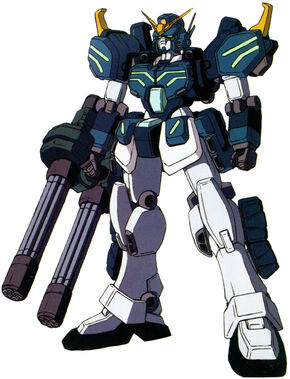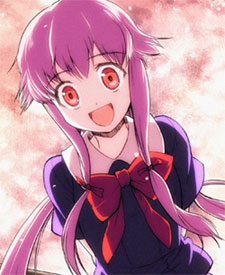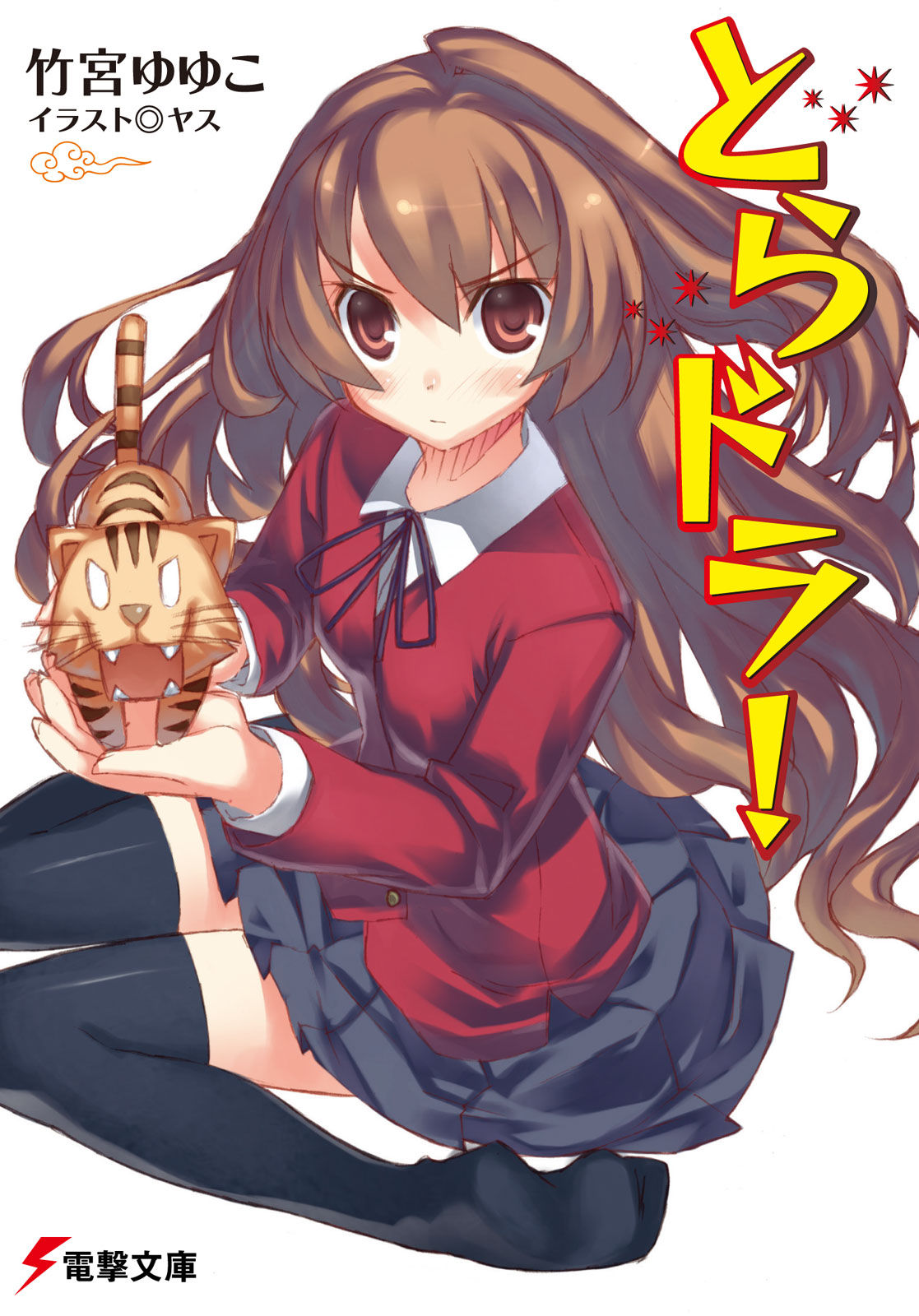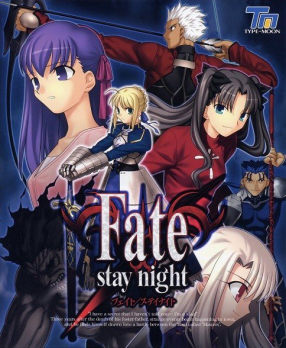Change of pace this time around. Today's term is onsen, the Japanese term for hot spring. Since Japan is situated in a volcanically active area, there are A LOT of hotsprings in the country. There are several types of onsen, ranging from "public bath" types to being part of an inn/hotel. They play a major role in domestic tourism, with people commonly vacationing at onsen to relax. Consequently, they show up quite often in manga/anime, most commonly in romance-comedies (for obvious reasons), though they can really be featured in any genre. Strategically placed towels or steam usually blocks out any nudity.
As an example, the majority of the series Love Hina (shown above) takes place in a girl's dormitory which features an onsen.
Sunday, April 24, 2011
Tuesday, April 19, 2011
Glossary Term: Yankee
Continuing on with definitions... today's term is yankee, which fortunately has nothing to do with yandere. And no, it's not a term for Americans either. Rather, in Japan, yankee refers to a delinquent or trouble-making youth. Stereotypical traits include bleaching their hair blond (or otherwise styling it in an odd fashion), wearing surgical masks, carrying bats or pipes, and just acting aggressively in general.
These types of characters typically get into a lot of fights, don't care about school rules, and just generally cause trouble. That's not to say that they're always the "bad guys" per se; some of them simply want to be seen as "tough" or as "somebody you shouldn't mess with". Others may have changes of heart as the story progresses and reform their ways.
Some examples of such characters include Mitsuhasi and Ito of Kyou Kare Ore Wa!! (pictured above), Harima Kenji of School Rumble, and Hibino Hareluya of Harelyua II Boy.
Sterotypes
Labels:
General Terms
Friday, April 15, 2011
Glossary Term: Yandere
Today's term is Yandere. If you remember the last lesson, "dere" comes from deredere, meaning lovestruck. But what does the "Yan" in this word mean? Well... in this case, it comes from yanderu, meaning mental/emotional illness. Uh oh.
These are the characters that go BERSERK when something or someone gets between them and their love. This isn't a tsundere's "violent beatdown of the love interest", this is more like "axe-murderer rampage". It should also be noted that many yandere characters are not obvious at first; they can seem to be sweet and affectionate at first but when they snap...
For obvious reasons, this character type is a source of criticism by many. A few examples of manga/anime that have yandere characters are Mirai Nikki (pictured above) and (semi-spoiler alert) School Days.
Hell hath no wrath like a woman scorned
For obvious reasons, this character type is a source of criticism by many. A few examples of manga/anime that have yandere characters are Mirai Nikki (pictured above) and (semi-spoiler alert) School Days.
Saturday, April 9, 2011
Glossary Term: Tsundere
Alright, we're pretty much reaching the final stretch for our lessons now. At this point, I'll be defining certain terms that I feel that anybody who reads manga or watch anime should know.
Today's term is tsundere, which refers to a character (usually female) who tends to alternate between two moods with regards to another character (the love interest). These moods are "tsuntsun" (irritable/cold) and "deredere" (love-struck) respectively, hence the term. The ways in which a tsundere acts can vary wildly; for example, "tsuntsun" behavior can range from simply ignoring the love interest to beating the guy up.
Tsunderes are most commonly found in romantic comedies as the conflicting personalities can be easily utilized to progress the story. It can be nice to see a character progress from being "tsuntsun" most of the time to being "deredere", though most tsunderes will always have both aspects of their personality.
Some examples of tsundere characters are: Shana of Shakugan no Shana (pictured above), Aisaka Taiga of Toradora!, and Asuka Langley Soryu of Neon Genesis Evangelion.
Today's term is tsundere, which refers to a character (usually female) who tends to alternate between two moods with regards to another character (the love interest). These moods are "tsuntsun" (irritable/cold) and "deredere" (love-struck) respectively, hence the term. The ways in which a tsundere acts can vary wildly; for example, "tsuntsun" behavior can range from simply ignoring the love interest to beating the guy up.
Indifference -> Shy Embarrassment
Tsunderes are most commonly found in romantic comedies as the conflicting personalities can be easily utilized to progress the story. It can be nice to see a character progress from being "tsuntsun" most of the time to being "deredere", though most tsunderes will always have both aspects of their personality.
Some examples of tsundere characters are: Shana of Shakugan no Shana (pictured above), Aisaka Taiga of Toradora!, and Asuka Langley Soryu of Neon Genesis Evangelion.
Labels:
General Terms
Wednesday, March 30, 2011
Supplementary Lesson: Other Media Part II
It's time for another supplementary lesson! This is a continuation of the lesson on "other media" awhile back.
This time we'll be talking about audio dramas, live action adaptations, and dojinshi.
Every once in awhile, popular anime or manga might get an audio drama, an acoustic-only performance. Rather than a direct adaptation, audio dramas tend to tell "side-stories" that aren't directly connected to the main story.
Likewise, sometimes an anime or manga will be adapted into a live-action version. There is, however, at least one example where the reverse occurred; "Oh! Edo Rocket" is a stage play that got adapted into an anime.
Finally, dojinshi are self-published works, often by fans or amateurs (though professionals have been known to produce them as well). These can be stand-alone works, or derivatives/fan-fiction of professional works. These are highly popular in Japan but not so much in the west.
That's it for now, see you next time!
This time we'll be talking about audio dramas, live action adaptations, and dojinshi.
Every once in awhile, popular anime or manga might get an audio drama, an acoustic-only performance. Rather than a direct adaptation, audio dramas tend to tell "side-stories" that aren't directly connected to the main story.
Likewise, sometimes an anime or manga will be adapted into a live-action version. There is, however, at least one example where the reverse occurred; "Oh! Edo Rocket" is a stage play that got adapted into an anime.
Finally, dojinshi are self-published works, often by fans or amateurs (though professionals have been known to produce them as well). These can be stand-alone works, or derivatives/fan-fiction of professional works. These are highly popular in Japan but not so much in the west.
That's it for now, see you next time!
Labels:
Supplementary Lesson
Monday, March 21, 2011
I see you (seiyu)
Ok, extremely bad pun this time (especially since I don't think they're actually pronounced the same), but I'm jetlagged from my trip. Seriously, Singapore's got a 12 hour time difference currently so it's literally the exact opposite. Ok back on topic, today's lesson is on Seiyu, or voice actors! Oh and before I forget, special thanks to the Korea's Music Seoul blog for the suggestion! Go check them out (after the lesson though!)
First off, what is voice acting? Simply put, its providing a voice for animated characters. Ever watch Star Wars? Yoda's voice was provided by a voice actor. Gollum's from the Lord of the Rings? Ditto. Pretty much any cartoon or videogame character voice ever? You get my point.
Anyways, the Japanese voice acting industry is particularly big relative to the rest of the world, largely due to the size of the anime industry (Japan produces an astounding 60% of the world's total animation output). As a result, popular seiyu can easily reach high levels of fame. It isn't particularly unheard of for people to watch a given anime just because a certain seiyu is in it and some seiyu have also joined the music industry to make further use of their miraculous voices.
Some examples of well-known seiyu are: Norio Wakamoto, Aya Hirano, Kikuko Inoue, and Romi Park (who's actually Korean).
Til next time!
First off, what is voice acting? Simply put, its providing a voice for animated characters. Ever watch Star Wars? Yoda's voice was provided by a voice actor. Gollum's from the Lord of the Rings? Ditto. Pretty much any cartoon or videogame character voice ever? You get my point.
Anyways, the Japanese voice acting industry is particularly big relative to the rest of the world, largely due to the size of the anime industry (Japan produces an astounding 60% of the world's total animation output). As a result, popular seiyu can easily reach high levels of fame. It isn't particularly unheard of for people to watch a given anime just because a certain seiyu is in it and some seiyu have also joined the music industry to make further use of their miraculous voices.
Some examples of well-known seiyu are: Norio Wakamoto, Aya Hirano, Kikuko Inoue, and Romi Park (who's actually Korean).
Til next time!
Labels:
Voice Acting
Thursday, March 10, 2011
Break
OtakuNovice will be taking a break as I will be headed off to Singapore for a week. Updates will resume when I come back
Thursday, March 3, 2011
Supplementary Lesson: Other Media
Manga and anime are often highly related, with manga becoming adapted to anime or a popular anime having manga "spinoffs". However, there are also two other sources of material that are often adapted to manga/anime forms or vice versa. These are:
- Light Novels: These are literally "light" or "short" novels, often with a few illustrations that are usually targeted towards young adults.
- Examples: Toradora!, Spice and Wolf, The Melancholy of Suzumiya Haruhi
- Visual Novels: Wikipedia calls these "an interactive fiction game featuring mostly static graphics, usually with anime-style art". Basically, think of a "choose-your-own-adventure" story but with graphics and in electronic form. These are typically targeted towards adults.
- Examples: Fate/Stay Night, Tsukihime, Clannad
Fate/Stay Night is a perfect example of how something can be adapted into multiple forms; it was originally a visual novel but its success has resulted in both anime and manga adaptations, as well as a light novel series that serves as a prequel, Fate/Zero (which, incidentally, is going to be adapted into an anime too!).
Labels:
Supplementary Lesson
Friday, February 25, 2011
All in the family
Partial continuation of the previous lesson! These aren't strictly honorifics per se but there are certain ways to address family members that you should know.
- "onii-" or "nii-" = older brother
- "onee-" or "nee-" = older sister
- "otou-" = dad
- "okaa-" = mom
For example "Onii-chan" to address an older brother or "Otou-san" to address your dad. Incidentally, it should be noted that it is not uncommon for husbands/wives to refer to each other as "Otou-san" or "Okaa-san" if they have kids.
See you next time!
Labels:
Honorifics
Saturday, February 19, 2011
Jackie Chan and Jackie-chan
Lesson 4! Whew, finally moved on.
Some of you may be wondering about the title of today's post. After all, Jackie Chan doesn't really have much to do with anime (he does have a cartoon that has anime influences though, but that's not really an anime in the strictest sense). Well,I find his name to be a great example for today's lesson; you'll understand soon enough.
Today's lesson is on Japanese honorifics. Many translators leave Japanese honorifics intact since the English equivalents lose something in the translation. The following are common suffixes:
Some of you may be wondering about the title of today's post. After all, Jackie Chan doesn't really have much to do with anime (he does have a cartoon that has anime influences though, but that's not really an anime in the strictest sense). Well,I find his name to be a great example for today's lesson; you'll understand soon enough.
Today's lesson is on Japanese honorifics. Many translators leave Japanese honorifics intact since the English equivalents lose something in the translation. The following are common suffixes:
- "-san": This is sort of the "generic" honorific, used to address people without adding any particular implication about your relationship.
- "-sama": This honorific denotes respect, whether it is a personal respect or due to a higher social status
- "-sensei": This honorific is usually used to address or refer to persons of authority (teachers, politicians, doctors) or persons who have achieved a high level of achievement in a skill or art (painters, manga artists, novelists). Can be used as a stand-alone word.
- "-kun": This honorific denotes familiarity and is usually attached to boys names.
- "-chan":This honorific denotes a sense of "endearment" and is usually attached to girls names.
- "-sempai": This honorific denotes "seniority" in an organization. For example, all students in higher grade levels would be sempai. Can be used as a stand-alone word.
- "Kohai": The opposite of sempai, a junior, but is typically not used as an honorific
- " ": Addressing somebody outside one's immediate family without the use of an honorific implies the utmost intimacy and is otherwise extremely rude/insulting if such intimacy does not exist.
Labels:
Honorifics
Monday, February 14, 2011
Valentines Day Supplementary Lesson!
Today we'll be having a special supplementary lesson since its Valentines Day. Valentine's Day is celebrated differently in Japan and this is bound to come up in any romantic manga/anime.
Valentine's Day:
In Japan, it is the custom for girls to give chocolates to boys. This is not necessarily only for romantic purposes (though of course this is the main idea); it can be out of courtesy, to friends or colleagues for example. "Courtesy chocolate" is known as giri chocolate.
White Day:
Conversely, on March 14, males are supposed to give reciprocating gifts to anybody who gave them a gift on Valentines Day. In theory, the gifts are supposed to be more expensive than what was received (two or three times more in fact)
Valentine's Day:
In Japan, it is the custom for girls to give chocolates to boys. This is not necessarily only for romantic purposes (though of course this is the main idea); it can be out of courtesy, to friends or colleagues for example. "Courtesy chocolate" is known as giri chocolate.
Happy Valentine's Day!
White Day:
Conversely, on March 14, males are supposed to give reciprocating gifts to anybody who gave them a gift on Valentines Day. In theory, the gifts are supposed to be more expensive than what was received (two or three times more in fact)
Saturday, February 12, 2011
Class(ification) is in session (part 3)
Lesson 3, Part 3!
This time we'll be dealing with genres that tend to be more unique to manga/anime.
This time we'll be dealing with genres that tend to be more unique to manga/anime.
- Mecha: When there's walking vehicles piloted by somebody. Who doesn't love giant robots?
- Psychological: Where the character's mindset is an important element of the story; emotional instability, guilt, and fears all help to advance the plot. Can be disturbing at times; insanity usually has a reason after all.
- Harem: Typically associated with romance-comedies, this involves several female characters who attracted to a male character. Often, the male character will be completely oblivious to the affections of those around him. If its multiple males attracted to a single female, its known as a "reverse harem"
- Ecchi: Literally the translation would be something akin to "lewd" or "dirty". Expect borderline nudity and skimpy outfits. The censorship ability of giant clouds of steam is astounding
- Shonen Ai/Yaoi: "Boys love". Focuses on romantic relationships between men. Seems to be quite popular amongst Japanese women
- Shojo Ai/Yuri: "Girls love". Basically the female equivalent of Shonen Ai/Yaoi, focusing on romantic relationships between women.
- Gender Bender: When switching genders is a major element in the story; can be about cross-dressing or switching bodies.

Labels:
Categories
Thursday, February 10, 2011
Class(ification) is in session (part 2)
Lesson 3, part 2!
This is a continuation of the last lesson, but now about manga/anime genres. Keep in mind that many stories tend to be a combination of these. Today though, we'll start off with the "general" genres.
This is a continuation of the last lesson, but now about manga/anime genres. Keep in mind that many stories tend to be a combination of these. Today though, we'll start off with the "general" genres.
- Action: Fighting, violence, just aggression in general. Typically associated with shonen manga.
- Adventure: Typically the character(s) will be heading off on a journey of some sort
- Comedy: Stories intended to amuse. There are also sub-genres that depend upon "key locations" (such as "school comedy")
- Drama: Intended to invoke some sort of emotion in the reader
- Fantasy: Magic, superpowers, and just stuff that doesn't have a scientific explanation
- Horror: Intended to strike fear into the reader. The artwork in these can get rather gory sometimes.
- Mystery: Unexplainable events? Mysterious cases? Keep guessing til the end, when all will (hopefully) be revealed
- Romance: When love is a key theme. Typically associated with shojo manga
- Sci-Fi: When the power of science has its limits lifted. Aliens, portrayals of the future, etc
- Sports: The story centers around sports of course. Usually focuses on the journey of a group from being nobodies to being champions
Labels:
Categories
Tuesday, February 8, 2011
Class(ification) is in session
Lesson 3
First off, sorry about the pun-title, won't do it again (probably).
Anyways... let's start with some more practical information regarding manga/anime. This time around I'll be explaining the different categories of manga/anime. Since many stories incorporate multiple genres (and due to the "genre shift" I mentioned before), manga/anime are typically classified by what the target audience is rather by theme. They are as follows:
Shonen: Targeted towards younger males (pre-teens to teens). Typically focused on action, humor, or both.
Shoujo: Targeted towards younger females. Typically focused on romance and drama. I personally find shojo stories tend to be darker than shonen stories
Seinen: Targeted towards older males (older teens/in their twenties). Stories of this nature tend to have more serious themes than shonen and in many cases have more "intense" art.
Josei: Targeted towards older females. I personally haven't read much josei so I apologize for my lack of information in this regard. Research, however, would seem to indicate that this category tends to focus on the everyday lives of women living in Japan.
First off, sorry about the pun-title, won't do it again (probably).
Anyways... let's start with some more practical information regarding manga/anime. This time around I'll be explaining the different categories of manga/anime. Since many stories incorporate multiple genres (and due to the "genre shift" I mentioned before), manga/anime are typically classified by what the target audience is rather by theme. They are as follows:
Shonen: Targeted towards younger males (pre-teens to teens). Typically focused on action, humor, or both.
Shoujo: Targeted towards younger females. Typically focused on romance and drama. I personally find shojo stories tend to be darker than shonen stories
Seinen: Targeted towards older males (older teens/in their twenties). Stories of this nature tend to have more serious themes than shonen and in many cases have more "intense" art.
Josei: Targeted towards older females. I personally haven't read much josei so I apologize for my lack of information in this regard. Research, however, would seem to indicate that this category tends to focus on the everyday lives of women living in Japan.
Labels:
Categories
Sunday, February 6, 2011
What big eyes you have
Lesson 2!
What's the difference between anime and a western cartoon? Aside from the obvious disparities in artistic style (anime tends to have a greater emphasis on facial expression for example), anime and cartoons tend to differ in terms of story.
Whereas western cartoons are generally intended to be humorous and hence have an episodic-nature, anime generally has an underlying story that remains for the entirety of the series. Furthermore, in anime, the "good guys" don't always win, which can be a little hard to swallow for people accustomed to happy endings. Also notice that "good guys" was in quotes there; it is not unusual for the protagonist to be an anti-hero.
Another difference is what I call "genre-shift". Comedic moments can occur quite often in stories that are serious overall and it is not unheard of for tragedy to strike in what is otherwise a comedic story. For some people, these brief "out of place" moments take a little time to get used to.
What's the difference between anime and a western cartoon? Aside from the obvious disparities in artistic style (anime tends to have a greater emphasis on facial expression for example), anime and cartoons tend to differ in terms of story.
Um... you can see the differences in art styles right?
Another difference is what I call "genre-shift". Comedic moments can occur quite often in stories that are serious overall and it is not unheard of for tragedy to strike in what is otherwise a comedic story. For some people, these brief "out of place" moments take a little time to get used to.
Labels:
Categories,
Differences
Saturday, February 5, 2011
It begins, it begins
Hi, welcome to Otaku Novice! This blog is intended to be a novice's guide to manga and anime (written by a novice). Basically, I'll be going over basic terminology and gradually move into reviews of some what I consider to be "beginner-friendly" series.
Lesson 1!
Anime: Basically just animation made by the Japanese. In Japan, the term actually refers to all animation regardless or origin though.
Manga: Basically just comics made by the Japanese. Comics influenced by manga and produced in other countries also exist, such as Manhwa (made by the Koreans).
Otaku: A Japanese term that refers to somebody who's "passionate" about anime and manga. Strictly speaking, the term can be used for *anything* really (music otaku, sports otaku, etc) but its strongly associated with manga and anime now. Its got a somewhat negative connotation; think "fanboy", "geek", or "nerd" as western equivalents.
That's all for now, see you next time!
Lesson 1!
Anime: Basically just animation made by the Japanese. In Japan, the term actually refers to all animation regardless or origin though.
Manga: Basically just comics made by the Japanese. Comics influenced by manga and produced in other countries also exist, such as Manhwa (made by the Koreans).
Otaku: A Japanese term that refers to somebody who's "passionate" about anime and manga. Strictly speaking, the term can be used for *anything* really (music otaku, sports otaku, etc) but its strongly associated with manga and anime now. Its got a somewhat negative connotation; think "fanboy", "geek", or "nerd" as western equivalents.
That's all for now, see you next time!
Labels:
General Terms
Subscribe to:
Posts (Atom)








